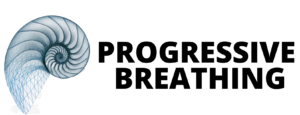Nasal Breathing: A Natural Solution for Managing Anxiety
In today’s fast-paced world, anxiety is a challenge that many people face daily. Fortunately, there is a simple, yet powerful tool available to us all: nasal breathing. This ancient technique can help reduce anxiety and bring about a sense of calm and balance. By regulating breathing, nasal breathing promotes emotional well-being and offers a natural way to alleviate stress.
Here’s how nasal breathing works as an effective anxiety management strategy:
1. Regulation of the Nervous System
Nasal breathing engages the parasympathetic nervous system, also known as the “rest and digest” response. This helps to counteract the body’s sympathetic nervous system, which is responsible for the fight-or-flight response triggered by anxiety. By activating the parasympathetic system, nasal breathing encourages relaxation, calming the mind and body.
2. Enhanced Oxygenation
When we breathe through the nose, the air is filtered, humidified, and warmed before reaching the lungs. This process increases the efficiency of oxygen uptake, promoting better brain function and reducing stress levels. Proper oxygenation helps to clear mental fog, allowing for more focused and relaxed thinking, which is crucial in managing anxiety.
3. Nitric Oxide Production
The nasal passages produce Nitric Oxide (NO), a molecule that plays a key role in vasodilation (the widening of blood vessels). This leads to improved blood circulation, allowing more oxygen to reach vital organs. With better circulation, the body and brain can maintain a calm, balanced state, reducing anxiety and promoting relaxation.
4. Cultivating Mind-Body Awareness
Nasal breathing serves as an anchor for mindfulness. By focusing on the breath as it moves in and out of the nostrils, we encourage a meditative state, grounding ourselves in the present moment. This mindful practice helps break the cycle of anxious thoughts and creates a sense of peace, shifting the focus away from external stressors.
5. Reduction of Hyperventilation
One of the physiological effects of anxiety is shallow, rapid breathing, or hyperventilation, which can exacerbate feelings of panic. Nasal breathing naturally encourages slower, deeper breaths, helping to stabilize the respiratory rate. This deeper, rhythmic breathing pattern prevents hyperventilation and reduces the physical symptoms of anxiety.
6. Improved Lung Function
Nasal breathing activates the diaphragm, the primary muscle responsible for breathing. This engagement results in deeper and more efficient breaths, improving lung function and increasing oxygen delivery to the body’s tissues. Over time, nasal breathing strengthens the diaphragm and supports healthier respiratory patterns, which in turn helps to calm the body.
7. Emotional Regulation
During moments of heightened anxiety, nasal breathing can serve as a tangible anchor for emotional regulation. By consciously shifting attention to the breath, individuals can quickly calm their nervous system and regain control over their emotional state. This makes nasal breathing a valuable tool for self-regulation in stressful situations.
Managing Anxiety Through Nasal Breathing
Incorporating nasal breathing techniques into daily life can significantly reduce the symptoms of anxiety. By focusing on the natural flow of the breath, individuals tap into a powerful source of calm and emotional resilience. Nasal breathing provides an easy, accessible way to manage anxiety, leading to a more balanced, centered state of being.
To further explore how nasal breathing can benefit overall health and reduce the harmful effects of mouth breathing, check out our in-depth article on the subject.



